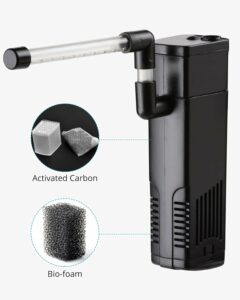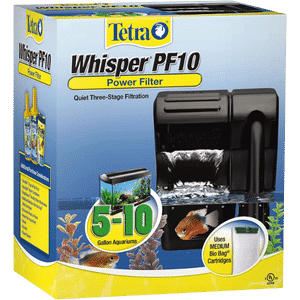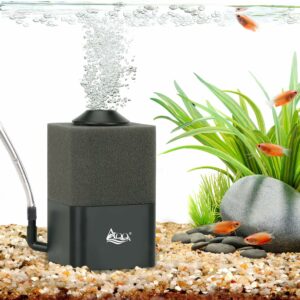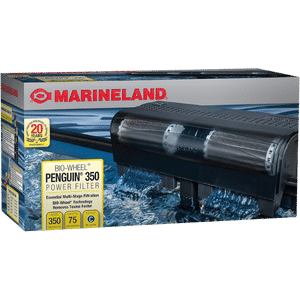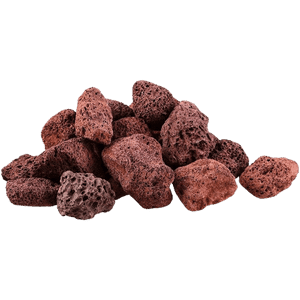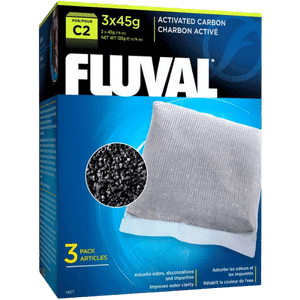How To Choose The Best Aquarium Filter for Your Betta Tank
A properly set aquarium filter is crucial for maintaining a healthy and thriving aquatic environment.
Understanding the importance of a fish tank filter is essential. Not only does it help to maintain clear and clean water but it also plays a vital role in removing harmful toxins and maintaining stable water parameters.
Without a reliable filter system, waste and debris can accumulate, leading to poor water quality and jeopardizing the well-being of your aquatic inhabitants.
In this post, we’ll discuss the types of fish tank filters available, how to choose the best aquarium filter for your system, and some helpful tips for keeping it in top condition.
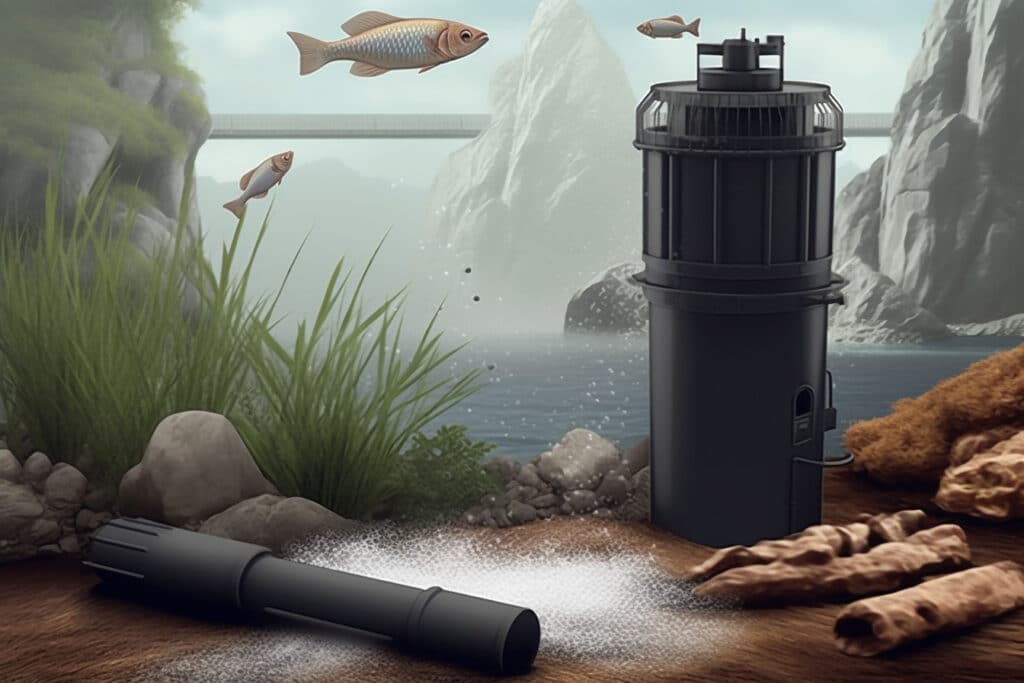

Table of Contents 🦑
Wondering Which Aquarium Filter Is Right for Your Siamese Friend?”
Welcome to our blog, where we reveal the top aquarium filter picks for almost every aquarium size – from compact options for small setups to robust choices for larger tanks.
With nearly 3 decades of experience in Betta Care and the aquarium hobby, I’ve guided countless clients, fellow hobbyists, and readers like you toward high-quality, effective equipment. Rest assured, each product recommended here has been personally tested by me in real-life situations.
My goal? To help you identify the best and most reliable filter for the betta tank available, ensure your pet fish thrives.
A Quick Heads-Up… If you come across links on this page that take you to products on Amazon Associate or other partner stores, they’re affiliate links. This means if you decide to make a purchase, BettaReef earns a commission, but at no extra cost to you.

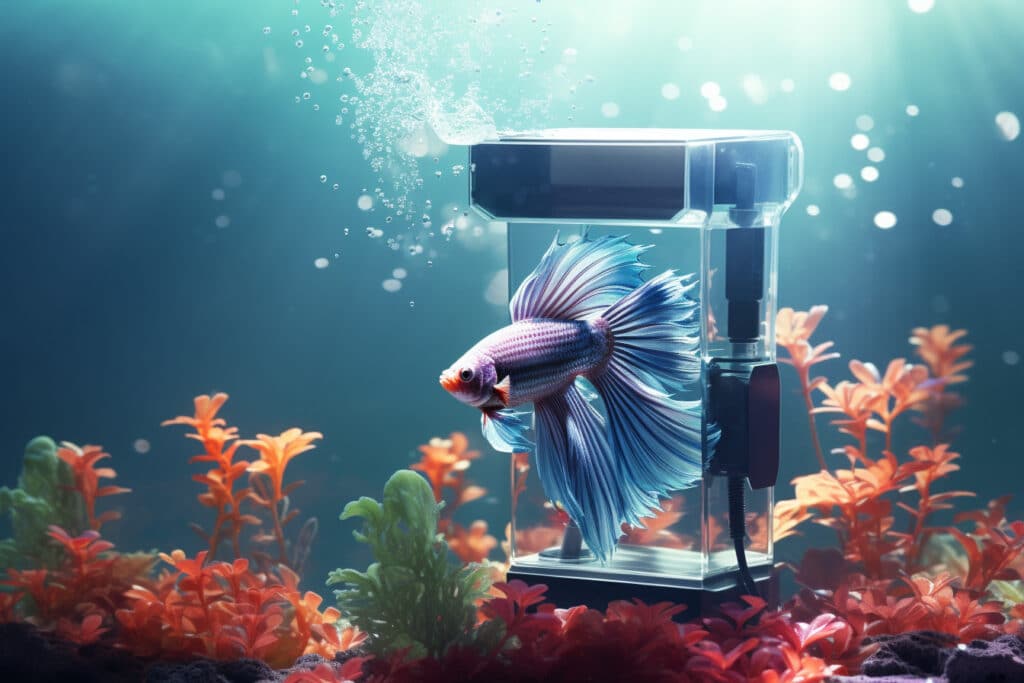
Find Your Perfect Aquarium Filter
Are you curious about how to keep your aquarium clean and your fish happy? Well, look no further!
In this article, we’ll dive into the world of aquarium filtration and explore the three main types: mechanical, biological, and chemical filtration. Don’t worry, we’ll break it down in a friendly and easy-to-understand way, perfect for aspiring aquarists like you. Get ready to learn about the superheroes that keep your tank water clean, the cleaning crew that tackles the visible junk, and the secret weapons that ensure your aquarium stays fresh and clear.
There are different types of aquarium filters you can choose from. Let’s explore the main ones:
5 Best Mechanical Aquarium Filter Types
When it comes to choosing the best types of mechanical filters for your aquarium, there are several options available. Some popular choices include:
- Canister Filter.
- Hang-On-Back (HOB) Filter.
- Internal Filter.
- External filter.
- Power Filter.
Canister Filters
These filters sit outside the tank and are great for larger aquariums. They provide strong filtration and keep clear water and healthy water levels.
Hang-On-Back (HOB) Filters
These filters are easy to use and attach to the back of your aquarium. They help keep the water clean by removing dirt and harmful chemicals.
Internal Filters
Provides effective and thorough biological and chemical filtration.
These filters go inside the tank and are good for small setups. They clean the water by trapping debris and promoting beneficial bacteria growth.
External Aquarium filters
External aquarium filters are a popular choice among aquarium enthusiasts for their efficiency and convenience. These filters are positioned outside the tank, typically below or beside it, and are connected to the aquarium through the tubing. One of the advantages of external filters is their larger capacity, allowing for more filter media and higher flow rates, which leads to effective filtration
Power Aquarium Filters
QUIET & RELIABLE The Tetra Whisper Power Filter uses 3-stage filtration to create clear clean wate
Power filters, also known as waterfall filters, offer good mechanical filtration. They use a combination of filter media and water flow to remove debris from the water.
Ultimately, the best type of mechanical filter for you will depend on the size of your aquarium, your specific filtration needs, and your personal preferences. It’s always a good idea to research and compare different options before making a decision.
7 Best Biological Aquarium Filter Types
Delving into biological filtration for your aquarium? Explore the array of effective options at your disposal. Here are a few top-notch choices to enhance your water quality:
- Wet/Dry filters.
- Biological Media in Canister Filters.
- Fluidized Bed Filters.
- Sponge Filters.
- Bio-Wheels.
- Substrate and Live Rock.
- Undergravel Filters
Wet/Dry Filters
also known as trickle filters, are a popular choice among aquarium enthusiasts. These filters offer efficient biological filtration by creating a highly oxygenated environment for beneficial bacteria to thrive. They work by trickling water over a filter media, allowing for the exchange of gases and facilitating the breakdown of harmful substances.
Biological Media in Canister Aquarium Filters
Many canister filters have dedicated compartments or trays for biological media, such as ceramic rings, bio balls, or porous rocks. These media provide ample surface area for beneficial bacteria to colonize and aid in the biological filtration process.
Fluidized Bed Aquarium Filters
Fluidized bed aquarium filters are efficient biological filters that use a suspended bed of small, porous particles. As water passes through the bed, beneficial bacteria colonize the surfaces of the particles, providing excellent biological filtration.
Sponge Filters
This sponge aquarium filter integrates biochemical filtration, physical filtration and oxygenation
While primarily known for their mechanical filtration capabilities, sponge filters also offer a substantial surface area for beneficial bacteria to grow. They can serve as effective biological filters in smaller aquariums or as supplemental filtration in larger setups.
Bio-Wheels
MULTI-STAGE FILTRATION: Delivers mechanical, chemical and biological aquarium filtratio
Bio-wheels are rotating devices with a textured surface that provides an ideal habitat for beneficial bacteria. As water flows over the wheel, the bacteria consume waste and help maintain water quality.
Substrate and Live Rock
Natural volcanic rock, quickly create the water quality environment needed
In certain setups like marine aquariums or planted tanks, the substrate and live rock itself can act as a biological filter. Beneficial bacteria colonize the surfaces, helping to break down waste and maintain a healthy environment.
Undergravel Aquarium Filters
Undergravel aquarium filters are a type of aquarium filter that works primarily through biological and, to some extent, mechanical filtration they are not as common these days but can still be used in some setups. They consist of a perforated plate or grid that is placed at the bottom of the aquarium, with a layer of gravel or substrate covering it. The plate allows water to flow through the gravel, creating an environment for beneficial bacteria to thrive.
The best type of biological filter for your aquarium will depend on factors such as tank size, the type of fish or organisms you keep, and personal preference. It’s important to choose a filter that provides ample surface area for bacteria colonization and matches the needs of your specific setup.
4 Best Chemical Aquarium Filter Types
Seeking effective solutions for chemical filtration in your aquarium? Look no further! Take a look at these exceptional types of filters that can work wonders:
- Activated Carbon.
- Zeolite.
- Ion Exchange Resins.
- Phosphate Removers.
Activated Carbon
Replacement filter media is designed to leave your tank sparkling clean and keep your Betta fish healthy
Activated carbon is a commonly used chemical filtration media. It helps remove impurities, odors, and discoloration from the water by adsorbing dissolved organic compounds and chemicals. Activated carbon cartridges or loose carbon media can be added to your filter.
Zeolite
Zeolite is another popular chemical filtration media that helps remove ammonia from the water. It can be particularly useful in new tanks or during cycling when ammonia levels may be higher. Zeolite can be used in filter media bags or specialized zeolite reactors.
Ion Exchange Resins
Ion exchange resins are used to remove specific substances from the water, such as heavy metals or phosphates. These resins work by attracting and binding to the targeted substances, helping to improve water quality.
Phosphate Removers
If you have issues with high phosphate levels in your aquarium, phosphate removers can be effective in reducing phosphate concentrations. These products typically come in the form of aquarium filter media or resin-based products.
The best type of chemical aquarium filter for your aquarium will depend on your specific needs and the water conditions you want to achieve. It’s important to follow the manufacturer’s instructions and regularly monitor water parameters when using chemical filtration to ensure optimal results.

Setting Up Your Aquarium Filter in a Few Simple Steps
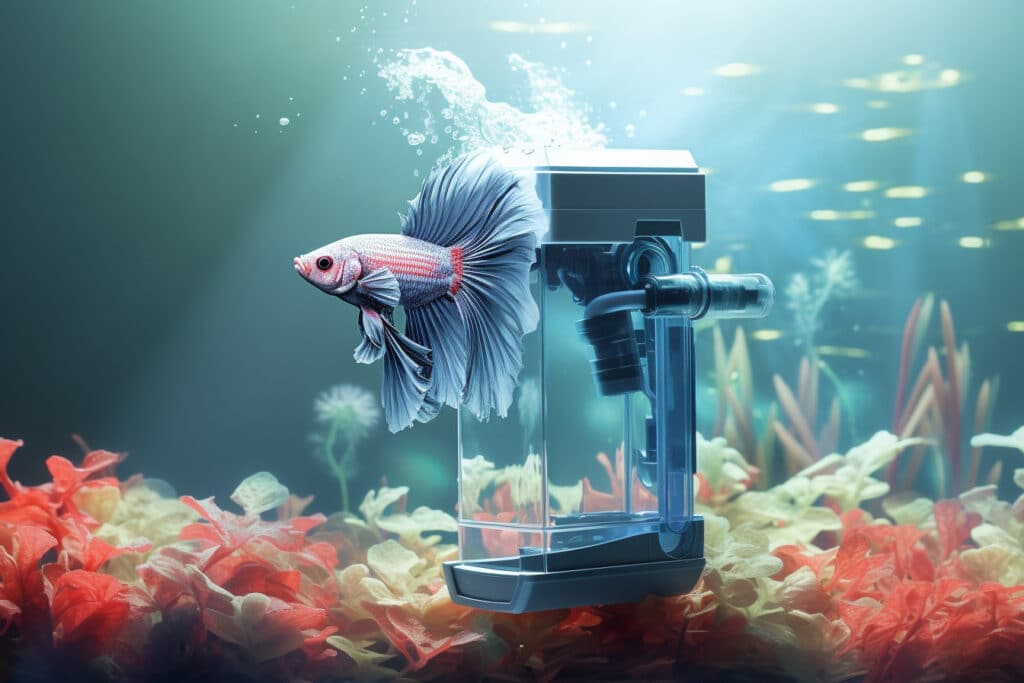
Step 1: Gather Your Supplies
When setting up an aquarium filter, there are several essential supplies you will need to ensure its proper installation and functioning. Here is a list of the necessary supplies:
- The Filter unit: This includes the main body of the filter, which houses the filtration media and components.
- All The Media: Depending on the type of filter, you will need appropriate filtration media such as filter pads, sponges, activated carbon, bio balls, or ceramic rings. These media help to remove debris, chemicals, and impurities from the water.
- Tubing: To connect the filter unit to the aquarium, you will need flexible tubing. This allows water to be drawn from the tank into the filter and then returned to the aquarium.
- Water pump: Some filters require a separate water pump to circulate water through the filtration system. Ensure that the pump is of suitable capacity and compatible with the filter unit.
- Intake and outflow attachments: These attachments are necessary to connect the tubing to the filter unit and to direct the flow of water in the aquarium.
- Mounting or hanging brackets: If your filter needs to be mounted or hung on the back or side of the aquarium, you may require brackets or clips for secure installation.
- Power source: Most filters require electricity to operate, so make sure you have a suitable power source nearby.
- Aquarium water: The filter will need water from your aquarium to establish the initial flow and start the filtration process.
- Instruction manual: Always refer to the manufacturer’s instruction manual that comes with the filter to ensure proper setup and operation.
By having these essential supplies, you will be well-prepared to set up your aquarium filter and provide efficient filtration for your aquatic ecosystem.
Step 2: Choose the Right Location
Selecting an appropriate location for the filter in the aquarium is crucial for several reasons. Here’s why it’s important and the factors to consider:
- Water flow: The location of the filter affects the flow of water in the tank. It’s essential to position the filter in an area where it can create proper water circulation and ensure efficient filtration. Placing it near the opposite end of the tank from the water intake will help promote even water flow and prevent stagnant areas.
- Accessibility: Choosing a location that allows easy access to the filter is important for maintenance and cleaning. You’ll need to regularly check and clean the filter media, replace cartridges, or perform any necessary adjustments. Ensuring easy access will make these tasks more convenient and encourage regular maintenance, which is vital for the health of your aquarium.
- Aesthetics: Consider the visual aspect of the filter’s location. While functionality is essential, it’s also important to find an aesthetically pleasing spot. Many filters come in various designs and styles, so you can choose one that complements the overall look of your aquarium. You can position the filter behind decorations or plants to help camouflage it and create a more natural and visually appealing environment.
- Noise level: Some filters can produce noise during operation such as the sound of water flowing or vibrations my suggestion is to find the quietest filter from most other filters and It’s wise to place the filter in a location where the noise won’t be too disruptive. Consider the noise tolerance of your living space and choose a spot that minimizes any potential disturbances.
- Electrical safety: Since most filters require electricity to operate, it’s essential to ensure the filter is placed near a power source and that the electrical connections are secure and protected. Be mindful of any electrical hazards and follow safety guidelines to prevent accidents.
Remember, selecting the right location for your filter is essential for maintaining a healthy and visually appealing aquarium. By considering factors such as water flow, accessibility, aesthetics, noise level, and electrical safety, you can ensure optimal performance and enjoy a thriving aquatic environment.
Step 3: securely install the Aquarium Filter Unit
To properly install a filter unit and ensure it is securely positioned in the aquarium, follow these step-by-step instructions:
- Attach the intake tube: Connect the intake tube to the designated opening on the filter unit. The intake tube is responsible for drawing water into the filter for filtration.
- Add Filter Media: There are various types of filter media, use the correct ones for your specific filter type each with its specific function. For mechanical filter media, you can find filter pads or sponges, For chemical filter media, you will need activated carbon or chemical resins.
- Place the filter unit in the aquarium: Carefully lower the filter unit into the aquarium, positioning it at the chosen location. Ensure that it is fully submerged in the water, allowing for proper filtration.
- Secure the filter unit: Depending on the type of filter unit, there may be suction cups or mounting brackets provided. Use these to secure the filter unit to the side or back of the aquarium. Ensure it is firmly attached and stable to prevent any accidental movement or displacement.
- Attach the outlet tube or spray bar: If your filter unit includes an outlet tube or spray bar, connect it to the designated outlet port on the filter unit. The outlet tube is responsible for returning filtered water into the aquarium.
- Check for proper positioning: Double-check that the filter unit is securely positioned and properly aligned. Ensure the intake tube is submerged and the outlet tube or spray bar is positioned to create adequate water circulation and flow.
Step 4: Plug in and adjust
Plug in the filter unit: Once everything is properly installed and positioned, plug in the filter unit to power it on. Confirm that the filter is functioning correctly by observing water flow and checking for any leaks or unusual noises.
Adjust the flow rate: If your filter unit has an adjustable flow rate, set it according to your aquarium’s needs. It’s important to find the right balance between filtration efficiency and gentle water movement that won’t overly disturb your fish.
Step 5: Monitoring
Monitor and maintain: Regularly monitor the filter unit’s performance and conduct routine maintenance as recommended by the manufacturer. This includes cleaning or replacing filter media, checking and cleaning impellers, and ensuring proper water flow.
By following these instructions, you can properly install and securely position a general filter unit in your aquarium, ensuring efficient filtration and a healthy aquatic environment for your fish. Remember to refer to the specific instructions provided by the manufacturer for your particular filter model.

Avoid These Mistakes with Your Fish Tank Filter
When using a fish tank filter, there are certain things you should avoid to ensure its optimal performance and the well-being of your aquarium inhabitants. Here are some key points to keep in mind:
Overloading the filter: Avoid overstocking your tank with too many fish or excessive amounts of waste-producing organisms. An overloaded filter may struggle to handle the increased waste load, leading to poor filtration and water quality issues.
Neglecting maintenance: Regular maintenance is essential for the proper functioning of your filter. Avoid neglecting filter cleaning and media replacement, as clogged or dirty filter media can impede water flow and reduce filtration efficiency.
Skipping water changes: Filters are not a substitute for regular water changes. Even with a filter in place, it’s important to perform routine water changes to remove accumulated toxins and maintain optimal water conditions.
Using incompatible filter media: Be cautious when selecting and using filter media. Some media types, such as activated carbon, may interfere with certain medications or remove beneficial trace elements from the water. Always research and choose appropriate media for your specific needs.
Placing the filter incorrectly: Avoid placing the filter intake or outflow near areas of strong water currents, as this can create excessive flow and stress for your fish. Additionally, ensure the filter is securely positioned to prevent accidental dislodging or damage.
By avoiding these common mistakes, you can maximize the effectiveness of your fish tank filter and provide a healthy and thriving environment for your aquatic companions.

FAQ's
Q: What is the price range of fish tank filters?
A: The price range of fish tank filters can vary depending on various factors such as the type of filter, brand, size, and additional features. Generally, you can find basic internal filters or sponge filters at more affordable prices, ranging from $10 to $30.
Hang-on-back (HOB) filters and canister filters, which offer more advanced filtration options, typically range from $30 to $150 or more, depending on their capacity and features.
External filters and specialty filters like wet/dry filters or fluidized bed filters can range from $100 to several hundred dollars. It’s important to consider your budget, the size of your aquarium, and your specific filtration needs when choosing a filter. Remember, investing extra money in a reliable and high-quality filter is essential for maintaining a healthy and thriving aquatic environment.
Q: How often should I clean my aquarium filter?
A: it’s recommended to clean the filter media every 2-4 weeks or as needed.
Q: What is the best type of filter for a small aquarium?
A: For small aquariums, options like sponge filters, hang-on-back (HOB) filters, or internal filters are commonly used. These filters are compact
Q: How do I know if my filter is working properly?
A: A properly functioning filter will provide consistent water flow, keep the water clear, and maintain stable water parameters.
Q: Can I turn off my filter at night?
A: It’s generally recommended to keep the filter running continuously, even at night. The filter helps with oxygen exchange and provides aeration for the fish.
Q: How do I choose the right filter for my specific fish species?
A: Research the specific needs of your fish, including their natural habitat, bio-load, and water flow preferences, to choose a filter that suits their requirements.
Q: Can I use a filter with saltwater aquariums?
A: Yes, filters are commonly used in saltwater aquariums. However, it’s important to choose a filter that is appropriate for the specific needs of saltwater fish and coral.
Q: What is the quietest filter option available?
A: Sponge filters and some internal filters are typically the quietest options. They operate with minimal noise as they don’t have impellers or motors.
Q: Can I use a filter with baby fish or fry?
A: Yes, using a filter with baby fish or fry is possible, but extra care should be taken to ensure they are not sucked into the filter.
Q: How can I prevent algae growth in my filter?
A: Algae growth in the filter can be minimized by regularly cleaning and maintaining the filter components.

Thank You for exploring the fascinating world of aquarium filtration with me today. We covered a wide range of topics, including the importance of properly setting up and maintaining an aquarium filter, the different types of filters available, essential supplies needed, and tips for troubleshooting common filter problems.
We also discussed the role of mechanical, biological, and chemical filtration, as well as the benefits of using air stones and understanding water flow in the tank. Whether you’re a beginner or an experienced aquarist, having a reliable and efficient filtration system is crucial for maintaining a healthy and thriving aquarium environment. Remember to consider factors such as tank size, filtration needs, maintenance requirements, and budget when selecting a filter.
By following proper installation and maintenance practices, you can ensure clean water, optimal water quality, and the well-being of your aquatic companions. Happy fishkeeping!
Related Blog Posts:
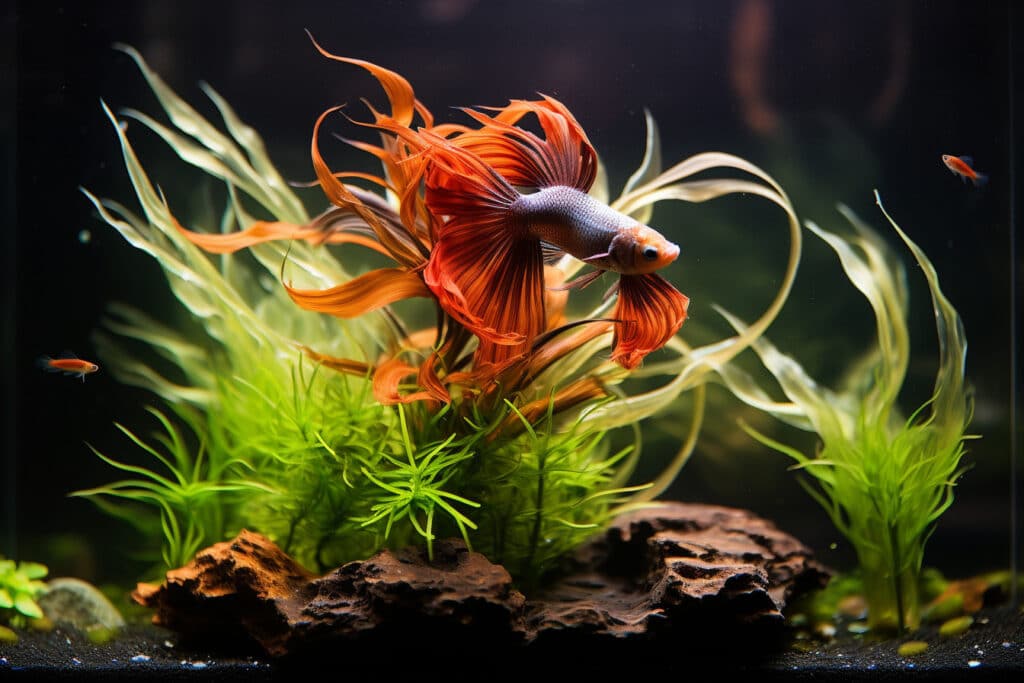
The Best Aquatic Plants For Betta Fish
Home The Best Aquatic Plants For Betta Fish Aquatic Plants for Betta Fish: Uncover the
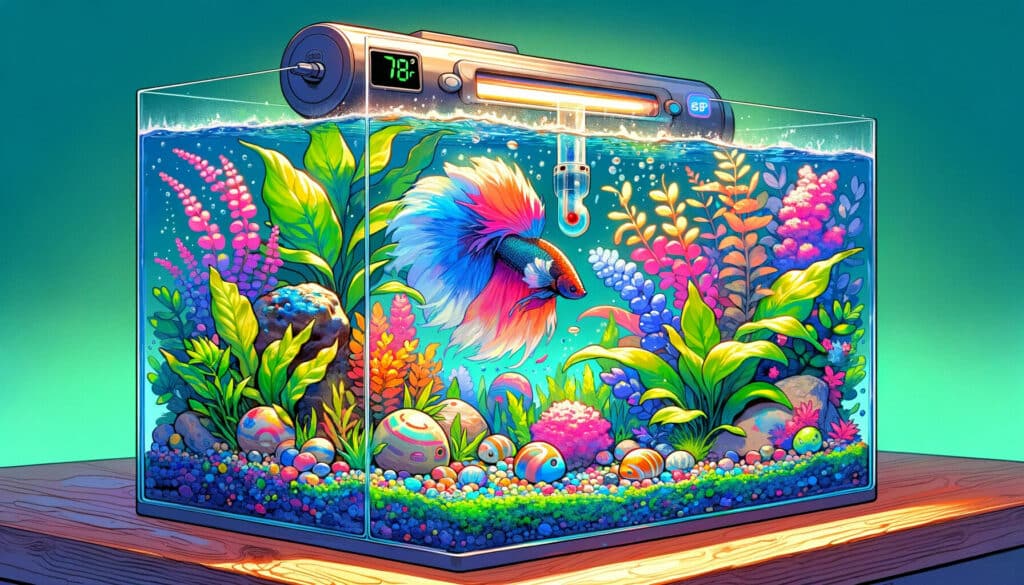
How To Choose The Perfect Aquarium Heater For any Betta Tank
How To Choose The Perfect Aquarium Heater For any Betta Tank Size. Trying To Find
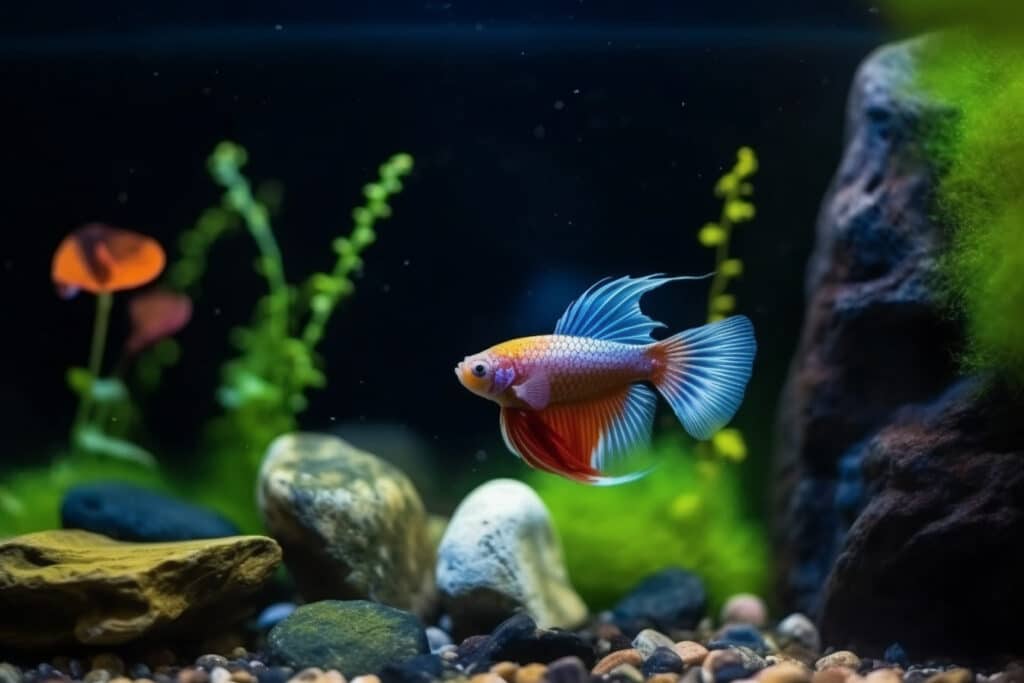
How to Choose Aquarium Rocks for Betta Fish Tanks, The Best Guide.
Aquarium Rocks for Betta Fish Tank Setting up a Betta fish aquarium is more than

